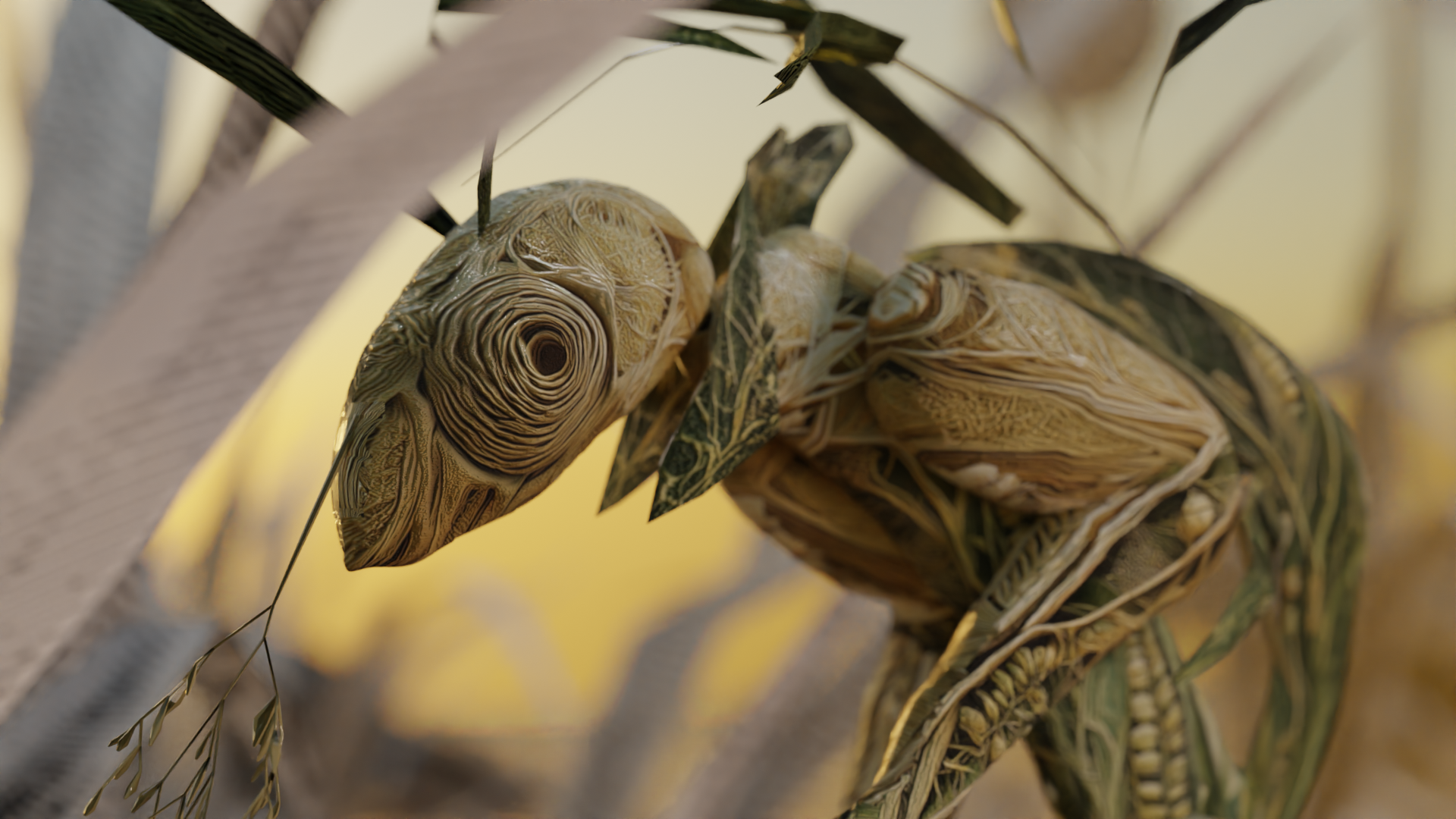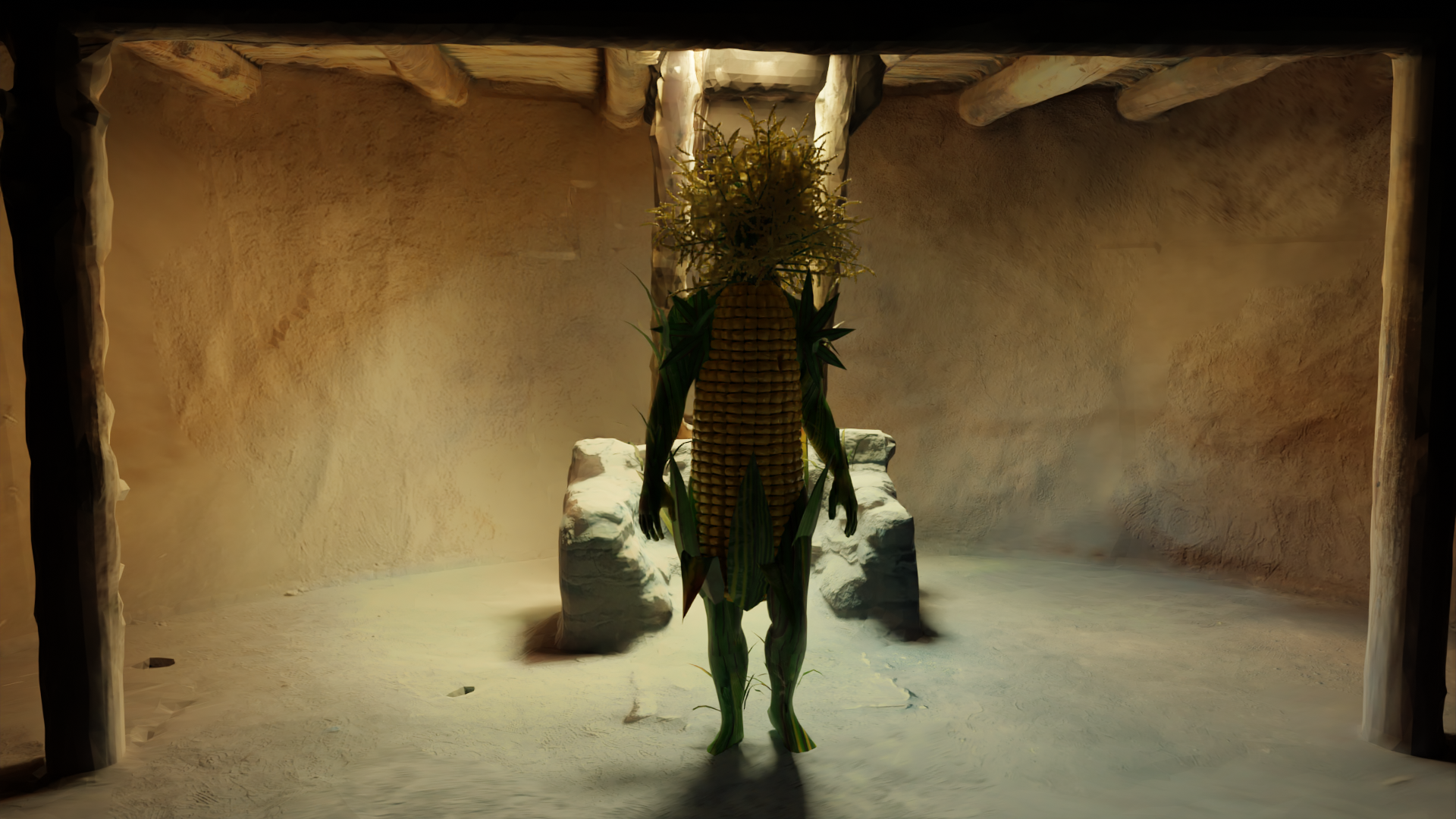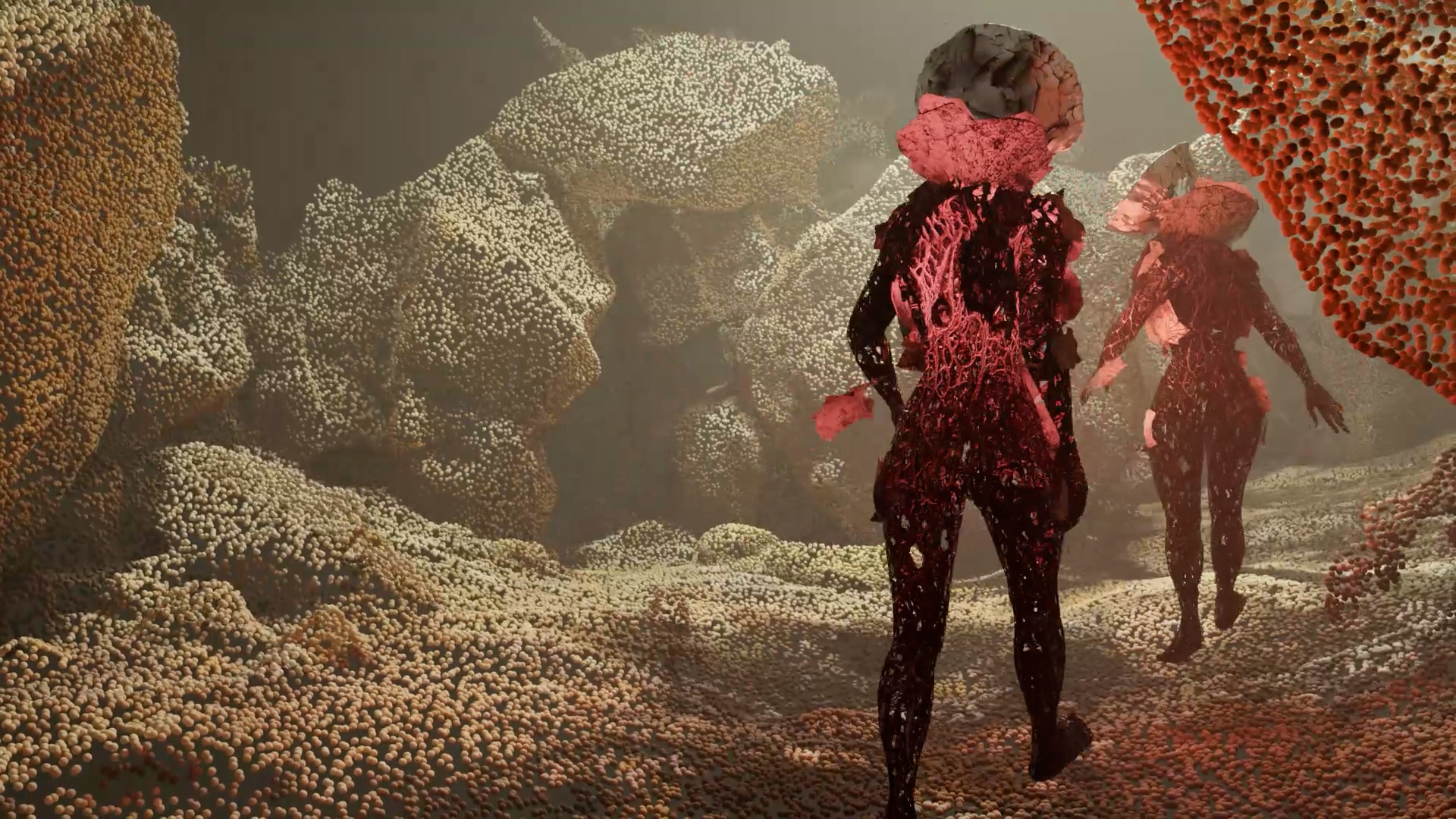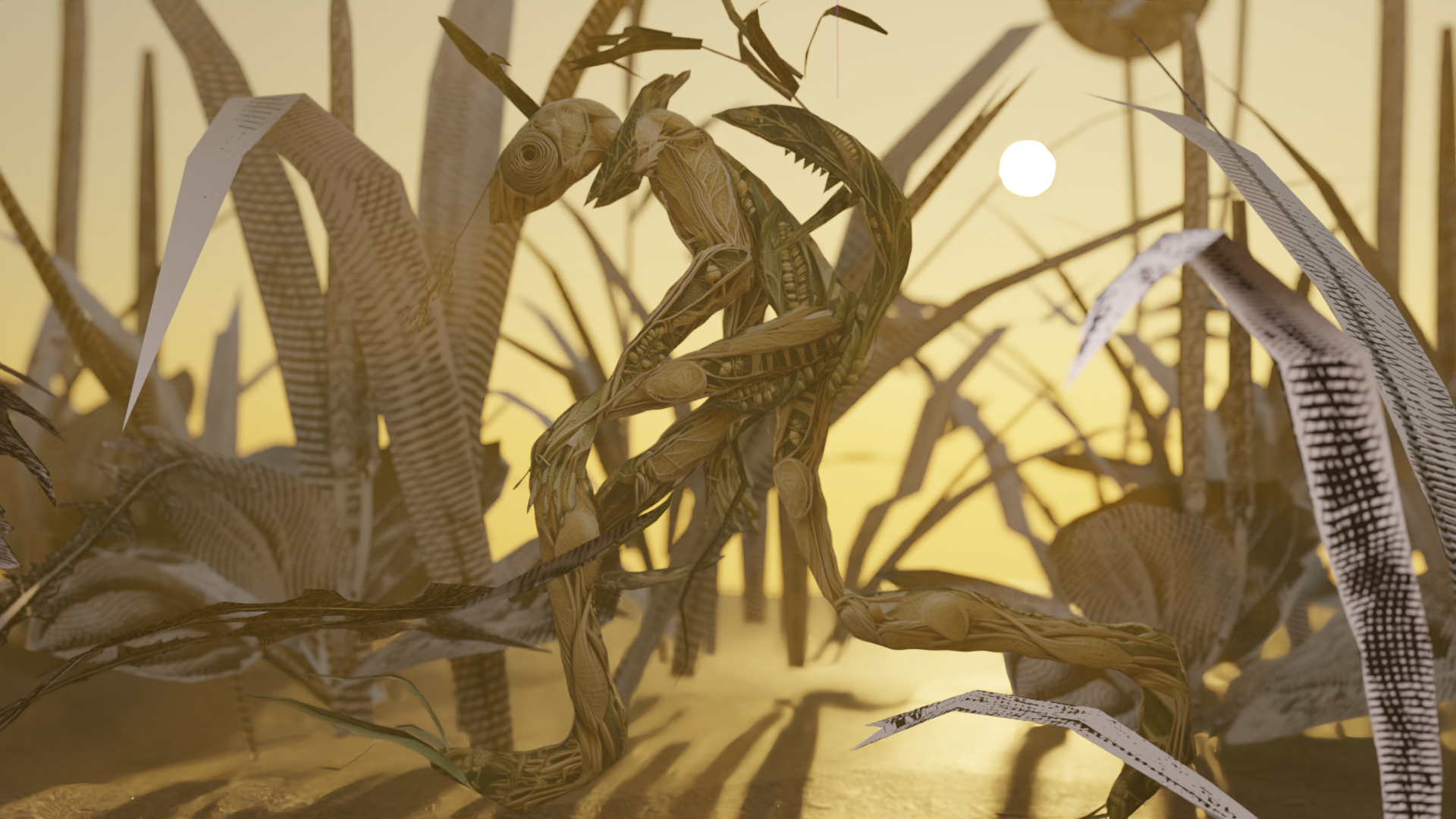Seed Wisdom
a virtual archive of seeds and its collectors (ongoing)




This interview has been conducted on the occasion of the online show “On the Edge of the Horizon”, co-curated with Tina Sauerlaender from RadianceVR. The show can be viewed here: https://on-the-edge-of-the-horizon.common.garden/
As someone who grew up surrounded by vegetable, fruit, and flower gardens, I was fascinated to imagine their seeds with voices. In Seed Wisdom, the seed is not a passive subject of scientific research or agricultural exploitation. It becomes a storyteller, an agent of change, a carrier bag.
Diane Drubay: The seed you present in this work, Roundup Ready, isn’t just a botanical subject; it’s an avatar, almost a character. Why did you choose to represent it in this anthropomorphic way?
Anke Schiemann: We're intertwined with seeds because they feed us. But I wanted to give them a voice from a different angle. We’ve been operating under an anthropocentric view of the world, where humans are the pinnacle of evolution. We often forget that there’s so much intelligence in animals and plants that we haven’t even begun to understand.
I was inspired by Ursula K. Le Guin’s idea that the story of the seed gatherer is more important than the one about the mammoth hunter. That was foundational for me, the idea that the small, sustaining things are the ones we’ve ignored for too long.
Seeds store centuries of knowledge. Communities have passed them down through generations, alongside rituals, stories, and recipes. But the way we grow our food has dramatically changed with industrial agriculture, and with it, we've lost a lot of biocultural diversity. So I began asking myself: what would seeds say if they could speak? What wisdom would they share?
DD: Let’s talk about the movement—the seductive dance of the Roundup Ready avatar. What inspired it?
AS: I often work with dancers. For this one, I gave the dancer a description of the seed’s character—she was meant to seduce the viewer. I was thinking of those 1960s American commercials selling breakfast cereals—animated, cheerful, and designed to draw you in. That was the inspiration.
So the dance becomes a bit ridiculous, just like the idea of needing to purchase a seed every year along with special fertilizer and pesticide. The seed was genetically modified to create a demand where there was none. That’s what happened with Roundup Ready, developed by Monsanto. It’s a cautionary tale. The performance mirrors that absurdity.
DD: If Seed Wisdom were a seed itself, what kind of world would you want it to grow into?
AS: It depends on the story you tell. What you see in this exhibition is just one small part of a much larger XR installation. It's like an almanac of seeds, each one with its own ritual, myth, or recipe. The Roundup Ready seed would speak of extractivism and artificial systems that make no sense. In contrast, a lotus seed, which can survive a thousand years and still bloom, tells a story of resilience. Other seeds, like maize or argan, are deeply woven into human culture and offer different, richer stories. It’s a reminder that we need to pay attention to which narratives we amplify.
The first time I saw Seed Wisdom, it made me think of a goddess from an indigenous community—her posture, the color tones, and the ritualistic movement. It didn’t feel like a data object or a scientific result. A sense of deep empathy was created through this piece. A seed, not as a commodity, but as an object of veneration. There’s something deeply humble in this gesture. Seeds of food, seeds of life, seeds of future worlds.
Anke Schiemann’s Seed Wisdom reminds us that not all intelligence is human, and by listening to these other stories, we could live differently. Through her work, the archive becomes embodied, and the ecological becomes theatrical. Anke reminds us that seeds may not only tell stories of the past but also hold the keys to surviving what’s ahead.